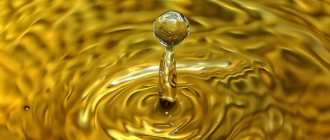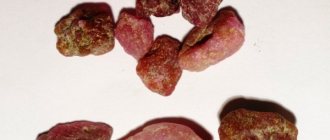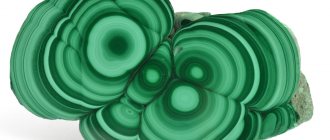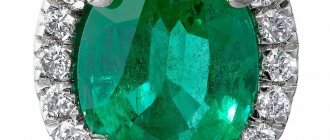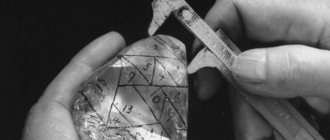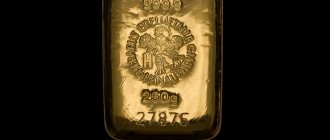Once upon a time, thousands of gold miners left their homes and rushed to foreign lands, hoping to get rich. In the mid-19th century, the so-called “gold rush” began, which continues to this day. Some of them went down in history.
Those who were lucky were then able to make their fortune. Sometimes it was possible to find nuggets of significant weight, by selling which one could provide for oneself for life. Interestingly, their true value was not always discovered.
So, young Conrad Reed found in a stream what he believed was a stone weighing almost 8 kg, which he used as a support for a door, but meanwhile it was a huge piece of gold. Amazing event.
But more often than not, the largest gold nuggets in the world have their own interesting history and do not go unnoticed.
Rabbit ears 3.344 kg
Hare Ears
its name because of its shape, similar to the head of this animal. It was found by Pyotr Simonov in 1935, near the Leninsky mine.
Peter decided to dig a hole right in the middle of the road, in front of the workshop door, and tried to break through the frozen layer of earth. Two girls, seeing how he was suffering, decided to help him, but then ran away to do their own thing.
When the workers left the workshop, they saw Simonov, who was sitting among the clods of earth, in them lay a huge nugget of an unusual shape. It appeared among rock crystal and calcite crystals and reached extraordinary sizes.
Experts found out that this is high quality gold, 932 samples. The dimensions of the “ears” are 6 and 7 cm, their thickness is about 2 cm.
Concentrate extraction
A visual experience was given by one of the YouTube users from the GOLDEN CHANNEL channel. He used a simple tray (drag) with magnets to simultaneously collect magnetite concentrate, which is also a source of gold. The user washed the precious metal on one of the gold-bearing Siberian rivers of the Lena basin, where industrial mining is currently not carried out due to its low profitability.
Technologies for artisanal gold washing using improvised means that are easy to make yourself were described in detail by Nikolai Latkin in the century before last in his book “On the Siberian Gold Mines.” Today they have hardly changed. In almost 8 hours of hard physical labor washing gravel, the user managed to collect about 10 kilograms of concentrate, which he later used for chemical extraction of gold.
Camel, 9 kg
He was found in Kolyma back in 1947. It weighs over 9 kg (9 kg 288g). It received this name due to its shape, which really resembles the body and head of a dromedary camel.
It has a shell-like surface and is heavily rounded, from which experts concluded that the “ Camel ” had been in the river bed for a long time, with river pebbles wrapped around it on all sides, giving it such an unusual shape.
Extraction of gold dust
However, first all the concentrate must be sorted. This is done either on a special vibrating table, or using the simplest gravitational method of deposition in water. Since the density of gold is higher than that of slag, when shaken in water it settles to the very bottom, which makes it possible to isolate gold-bearing sand. Next comes dry cleaning.
Unnecessary impurities are removed using nitric and sulfuric acids, which dissolve the sand. Gold does not react with them. The purified concentrate is poured with aqua regia (a mixture of nitric and hydrochloric acids), which dissolves the gold. The solution is filtered and gold is separated from it by electrolysis. To obtain the purest possible metal, the dissolution and precipitation procedure is repeated several times. After this, all that remains is to fuse the resulting grains of sand-crystals.
Hand of Fate, 27.2 kg
It was found in Australia in 1980. There is a story online from Ellie Hiller, who and her family made this significant find. She, her husband Kevin and their 4 children decided to travel around Australia by bus. They sold everything they had, quit their jobs, and hit the road, intending to stay in one place for no longer than 3 months.
In September 1980, they took metal detectors and went looking for gold, as they did every day. And Kevin was able to find the nugget. She and Ellie tried to dig it out of the ground, but it only grew in size. It took a long time to dig; somehow they loaded 27 kg of gold into the car.
They decided to call it " Hand of Fate " because... it is like a blessing hand. Its other name is “ Hand of Faith ”. It was found in Victoria, near the town of Kingauer. He is one of the record holders, i.e. the largest nugget of this precious metal found using a metal detector. It was purchased by an American casino and is now on display in its lobby in downtown Las Vegas.
How are gold nuggets formed and where can you find them?
Precious pieces of rock are formed in the bowels of the earth. It takes a long time for native gold to form. The exact conditions of the precious fragments are unknown to scientists to this day. There are several versions of this process. The most popular are:
- Gold grains are attracted to ore deposits.
- Native gold is the remains of ancient large veins that have been destroyed.
Some characteristic features allow us to determine the likely locations of pure precious metal ingots:
- proximity to the junction of tectonic plates or traces of volcanic activity;
- area of occurrence of ore or placer gold;
- lack of nearby silver mines.
Oliver Martin, 36 kg
One of the largest gold nuggets was found in the USA, in the state of California. It was named after the person who found it - Oliver Martin . This happened in 1854. Oliver at that time was slightly richer than the average tramp.
He and his friend drank heavily and walked out of the bar, heading to the camp. But an incredibly heavy downpour began, and the partners found themselves in the rain at the foot of the mountain. The rain caused flooding in the area.
The water that poured from the cliff washed the friends straight into the stream. Martin almost drowned, but was able to grab onto the branches of a tree and hung like that until the morning. Then the water finally went away.
But his friend, John Fowler, could not survive the flood. Oliver decided to dig a grave for him near the rock. Having dug a hole, he suddenly came across a huge nugget, it was the size of a bull’s head.
The lucky owner of a huge piece of gold became rich, the nugget was sold for $22,700, and was later demonstrated in different cities of the United States. Martin himself became rich.
Review of the largest finds
How much do the largest nuggets mined from the depths weigh? Depending on the luck of the miners, you can find ingots whose weight varies from several grams to tens of kilograms.
Expert opinion
Vsevolod Kozlovsky
6 years in jewelry making. Knows everything about samples and can identify a fake in 12 seconds
The most successful finds end up in the book of records and participate in specialized exhibitions. Subsequently, they are either sent for remelting (in 95% of cases) or left as a visual aid.
In the world
In world practice, the largest nugget is the “Holterman plate”. It was discovered in 1872 in Australia at one of the quartz mines. The weight of the found cobblestone was 250 kg, of which 93 kg was pure gold. It was later melted down to make jewelry.
Since the block for the most part did not contain native gold, but quartz inclusions, scientists are still arguing whether it can be called a nugget. Many agree that it was just a piece of vein. However, even in this case, it remains the largest in the history of gold mining.
A few years earlier, in 1869, the record holder was the “Welcome Stranger,” which was found right on the road. Two fellow miners returning from work discovered a lump of native gold in the mud where their cart was stuck.
Weighing showed that the weight of the ingot is 71 kg. It is noteworthy that to determine the mass of the block it had to be cut into several parts due to the lack of suitable scales.
No less remarkable was the discovery of a piece of native gold in California (USA). While digging the grave of his comrade and colleague, a local town prospector came across a large cobblestone. After extracting the stone to the surface, it turned out that it was in fact native aurum. Wanting to pay his last respect to his comrade, the miner named the 36 kg nugget after him - Oliver Martin. Subsequently, the stone was sold for 22.7 thousand dollars.
In Russia
Like Japan, Russia is considered a country rich in gold, but most of it is represented by medium and small placers. However, there are also impressive representatives. The most famous of them is the Russian Precious Triangle. The native block was discovered in 1842 in the Southern Urals. In addition to its size, the stone has one more feature - it was found by an 18-year-old guy in a mine that until that moment was considered completely exhausted.
Another representative of especially large native gold ingots was discovered in 1895. His weight was 31 kg. The mass of subsequent finds did not exceed 20 kg.
Large triangle, 36 kg
Its weight is 2 pounds, 7 pounds and 92 spools, if converted to our scale measure - 36.2 kg. It was found on October 26, 1842 by craftsman Nikifor Syutkin.
The placer in this place has already been worked out, only the place under the factory remains. It was dismantled, and while working, Syutkin came across a nugget, which was called the “ Big Triangle ” for its shape. Now it is stored in the Russian Diamond Fund.
The fate of Nikifor himself was not very successful. Syutkin previously received 3 kopecks a day. For the nugget he found, he was entitled to 15 kopecks per spool. The “Big Triangle” was valued at 28,146 rubles, of which Nikifor should have received 1,266 rubles 60 kopecks, a huge amount for such a person.
The head of the Ural mining assurances, fearing that he would immediately waste everything, gave him 66 rubles and 60 kopecks, and put the rest in the bank at interest. Nikifor immediately started a revelry with his comrades. Then he began to beg for money in every way. The bosses got tired of brushing him off and gave him all the money.
Syutkin continued to drink, his binge lasted almost his entire life, interrupted only at those moments when he was put in a “cold” cell on bread and water or was flogged in the mine office. He died in poverty, forgotten and despised by everyone.
How much in rubles?
The user's final loot was a mini-gold bar weighing just over 4.13 grams. All that remains is to implement it and calculate the daily profit. Unfortunately, this is where the main problem emerges. According to domestic legislation, artisanal mining of precious metals and their sale is an administrative violation. According to Article 19.14 of the Code of Administrative Offenses of the Russian Federation, a violator faces confiscation of gold and a fine of 3-5 thousand rubles.
Anastasia Gnedinskaya in her article “Predators or Miners” says that artisanal gold is usually sold through familiar jewelers who make jewelry out of it for a “small portion”, or through pawn shops. The latter accept “handicraft” as gold of the lowest standard 375, and in the best case (from acquaintance) as 500. That is, in the best case, they will be able to earn 5,500 rubles for a day’s production, and in the worst case, a little more than 4,000 rubles.
The costs of reagents can be ignored here, since they are small. Earning 4,000 a day can be considered quite decent, if not for its obvious illegality. However, as amateur prospector Vladimir Shilov told RIA Novosti, this fact stops few people. After all, even in the Moscow region you can earn over 300,000 rubles in a season from artisanal gold, and in Siberia – much more.
tstosterone.ru
(Visited 4,488 times, 6 visits today)
Welcome Stranger, 70.9 kg
This nugget was found in 1869, in Australia, Victoria, in the city of Moliagul, 200 km from Melbourne. The lucky ones were prospectors John Dizon and Richard Oates.
One day Dizon was loosening the ground when he suddenly discovered something very hard. As a person associated with gold, his first thought was that it was a nugget. But reality exceeded all his expectations. Dizon dug up such a huge lump of gold that he could not move it. Moreover, he was not immediately able to find out the weight of the find, because... it was difficult to find scales where they could weigh him.
Unfortunately, this huge nugget, which was called the " Welcome Stranger ", has not survived. It was crushed into pieces, breaking off one piece after another over the course of 5 hours. Not even a photograph of this unique nugget remains. Where it was found, a pillar was erected on which you can read the names of 2 miners; they were able to earn 9,563 pounds.
Holterman plate, 83.3 kg
In Australia, near Sydney, a record-breaking huge nugget was found at the Hill End mine in 1872. It was a gigantic block weighing 280 kg, but it could not be called pure gold.
The find was a quartz slab, the length of which was 144 cm, width - 66 cm, and thickness only 10 cm. Gold was smelted from it. This huge nugget was named after the man who was able to find it - Bernard Holtermann. Before that, he spent several years searching for gold, until he became famous thanks to his find.
“ Holtermann Plate ” also did not survive to this day; it was crushed and melted down, but a photograph of it remained, because Bernard loved to take photographs.
3 3
What is a gold nugget
A gold nugget is a pure or minimally ore precious metal. It can have different shapes and sizes. Particularly large specimens weighing up to a hundredweight, and sometimes more, are valued.


